![]()
Marvelous journey to Lebanon — just a few seats left!
Join us in Lebanon on a very special pilgrimage. September 17-24, 2023. Watch the video below and click here for the full itinerary and online booking.
Also, if you go to this link, and look to the right hand side, you may subscribe to our Youtube channel for free. This provides you with a short alert when we post new conversations and videos, so you are always notified.
We invite you to consider doing so! —RM
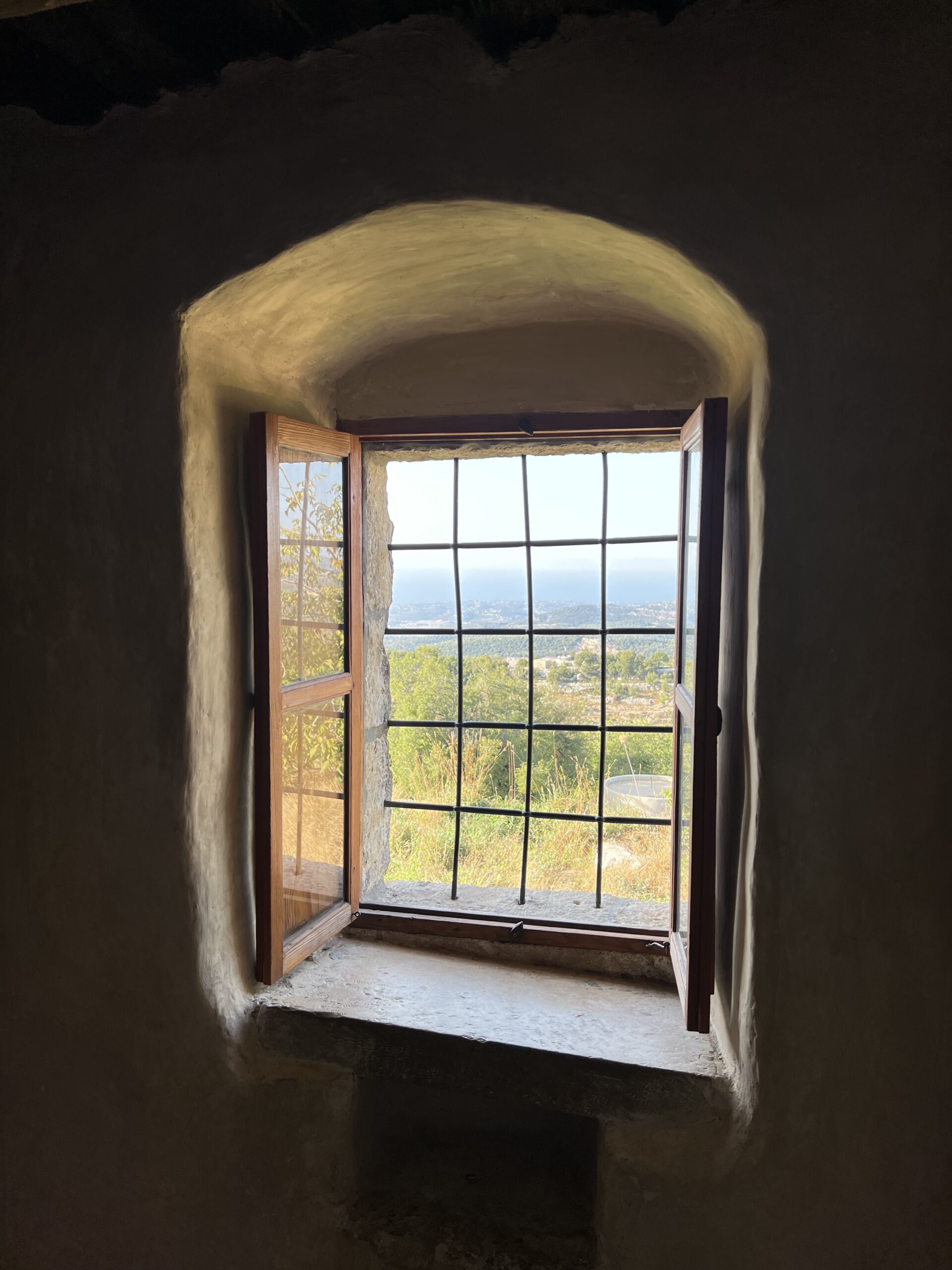
St. Charbel‘s window of the hermitage in Annaya, Lebanon, where St. Charbel (who lived from 1828 to 1898) spent the last years of his life. Annaya lies in the hills 16 kilometers (10 miles) to the east of the city of Byblos, Lebanon, on the coast of the Mediterranean Sea, visible in the distance. Today, many tens of thousands make a pilgrimage each year to St. Charbel’s cell…
Lebanon Report 2023, #7: Thursday, August 3
The Hand of St. Charbel
By Christopher Hart-Moynihan, Director, Friends of Lebanon Project
I have discussed many times in this Lebanon Report the life and miracles of St. Charbel Makhlouf, who was born in Bekaa Kafra, Lebanon, in 1828, and died at Annaya, Lebanon, in 1898.
Charbel, a Syriac name composed of the elements Charbo “story” and el “God,” and so meaning “story of God,” can also be written as “Sharbel” in English.
t. SCharbel spent his life as a monk with a growing reputation for holiness and miracles. After his death, his body was found incorrupt and for a period of 67 years, it continued, inexplicably, to send forth an unearthly light and to produce a mixture of oil and water.
On January 9, 1993, a woman named Nohad El Shami experienced a miraculous full recovery from the partial paralysis of the left side of her body after having a vision of St. Charbel.
The details of the story of El Shami’s healing are quite striking. I share the following account from the website of the Family of St. Charbel, an organization dedicated to sharing information and testimonials about Charbel:
“She recounts that on January 9, 1993, she saw in her dream two Maronite monks standing next to her bed. One of them put his hands on her neck and operated on her, relieving her from her pain while the other put a pillow behind her back. When she woke up, Nohad discovered two wounds in her neck, one on each side, and was completely healed. The following night, St. Sharbel [sic] said to her in a dream:
“I cut you by the Power of God so they (the people) could see you, because some people have strayed away from praying, from attending church and from respecting the saints, and you cannot do anything to people! But whoever needs anything from me, I, Father Sharbel, am always present in the hermitage. I ask you to visit the hermitage on the 22nd of each month and attend the Divine Liturgy, as long as you live.”
This was only one of thousands of miracles attributed to Charbel but it inspired a monthly pilgrimage to Annaya on the 22nd of each month, in which thousands of Lebanese (mostly Christians, but also some Muslims) participate to this day.
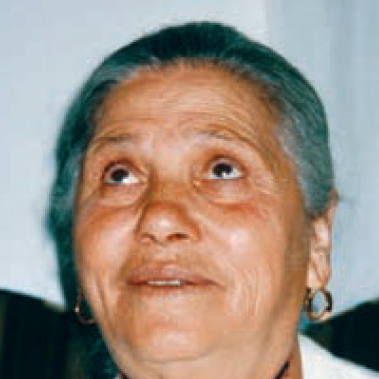
Nohad El Shami, the Lebanese woman who recovered from paralysis after a mystical vision of St. Charbel in 1993, 30 years ago [image taken from the website of the Family of St. Sharbel]
Receiving St. Charbel’s Message: Raymond Nader
By Christopher Hart-Moynihan
There is today in Lebanon a man who “knows” Charbel very closely, who spent countless hours in silence in the tiny hermitage on the mountaintop in Annaya where Charbel lived out the last years of his life, and who then received an intimate experience of the divine that changed his life. His name is Raymond Nader, 61.
Today, Nader is the Director of Télé Lumière, a television station based in Beirut that broadcasts worldwide. He has worked for many years to promote the unity of Lebanon through dialogue with the Sunni, Shia, Christian and Druze communities.
On July 26, 2023, I met Nader in person near Washington, D.C.
Nader speaks with great conviction and clarity, in a deep voice, about the importance of unity in Lebanon, and of the continued Christian presence in the country. But most of all, he is on a mission to share the meaning of his mystical encounter with St. Charbel and with the divine.
Nader and other devotees of St. Charbel are members of the organization The Family of St. Sharbel (which uses the alternative spelling of Charbel’s name). Established in 1996 in Lebanon, the group has thousands of members and seems to be trending towards becoming an ecclesial community, with a mission of reflecting and living the spirituality that Charbel and the other members of his order, the Order of Lebanese Monks, practiced during his life and up to the present day. Members of the group have told me that they seek to be “monks in the world,” and “set a Christian example” that will ultimately have the effect of drawing others to Christianity — “the eastern way of evangelizing.”
In the United States, The Family of St. Charbel has around 7 prayer groups with between 10 and 60 members each, and many more unofficial members. Through their focus on prayer combined with following Charbel’s example and living out the Gospel in the world, the organization has been growing rapidly in the United States since the first small American group was started in 2017.
Below is a transcription of Nader’s conversation with our Lebanon Report.
Childhood in a Maronite Family
Lebanon Report: So here we are on July 26, 2023, with Raymond Nader. We want to hear the very surprising, moving, profound, and transforming story of your encounter and friendship with St. Charbel.
Raymond Nader: I will start from the beginning. From the beginning, I had a big problem, and this problem was with the Christian faith. I will explain. I was born into a Christian family. And was raised to adore Jesus, to love him. Our mother Mary, the saints. Our house was full of icons, pictures. And like every Christian family we were raised to love God, to love Jesus. We were Christians: we prayed in the family, we would go to church on Sundays.
So my first problem was going to church on Sundays. It’s like all the kids of the world. No kid likes to go to Mass on Sunday. You know, because you have to be there, to sit for one hour without moving, without saying any words. And watch something that you don’t understand. So it was a torture for me, a real torture. Sitting without moving, without saying any word, without doing anything. Just watching something that was so weird.
So this was my first big problem. My second problem was that one who celebrated the Mass was my grandfather. My grandfather was a priest. So I had a double problem: first to attend the Mass, second to watch my grandfather, for one complete hour, doing things that I don’t understand. This is already acceptable. But the most intriguing problem was with this Eucharist.
So during that time, we didn’t buy the Eucharist, the hosts, from the market. We made it at home. So I spent most of the night on Saturday with my grandmother, baking the hosts for my grandfather. So we were baking maybe 500, 600 pieces. I ate half of them because they are so delicious when they are hot. And I would keep the rest — 200, 300 hosts for my grandfather for the Mass on Sunday. And on Sunday I’m there, sitting in the church, looking at my grandfather celebrating the Mass, doing these gestures. And at the end of the Mass, I see people standing in line, one after the other, to receive one of the hosts that I prepared the day before.
So I was thinking that this should be something stupid. Maybe I can teach them how to bake the host. They can make it at home, and eat hundreds of them, instead of coming to the church, spending one whole hour to receive one, just one host! So I was asking unceasingly to my grandfather, what’s happening in the Mass? What are you doing? Why can I bake 500, 600, 700 hosts and eat them? While at the Mass, you give them one by one with a lot of veneration, and we have to wait one hour. What do you do when you make these gestures above these hosts? What is happening?
I was so small, and my grandfather thought that I would not understand. So he was avoiding my questions, until one day he revealed to me his secret. He said “I’m a priest,” when I asked him about his job: “What is your job? What are you doing?”
And the job of the priest, he said, is to pray to God. And then God will descend from heaven, He will reside in these hosts and people will eat.
And because God is love, in this way, love will enter their hearts and they will start loving each other.
And he said, when you grow up, you will understand. So I kept this in my mind: my grandfather is a priest, he calls God, God comes down from heaven, He sits somewhere in these hosts, and people eat them, just to love each other. This is the way in which love can penetrate the hearts of people. And this was the main idea and everything revolved around this idea.
So I went to Masses looking at my grandfather and, after that, other priests, and thinking about this mystery. How can God the creator come down from heaven and be inside human beings? And I started my journey just trying to find, let’s say, reasonable answers to this mysterious question. So I started reading books, thinking, contemplating the stars at night, and just thinking how a huge God who created the universe can come down from heaven and be eaten through a small piece of bread.
And then, at my first Communion, I received a beautiful book, called Laplus belle histoire du monde [“The most beautiful story in the world”].
And that was the holy book, the Bible illustrated for kids. So I started reading the Bible. And I loved Jesus. I realized that he is so special. But I couldn’t connect God the creator with the Jesus-God, with the host, the Eucharist, with the Holy Spirit — because my father told me that God is inside of you, through the Holy Spirit. So I got confused. God is the creator, God is in the host, God is Jesus Christ, God is inside of me. God is something so complicated. So I started searching in science. I went into math, physics, biology, cosmology, just to resolve this question of creation, of God.
Then at the age of 13 — it was 1975 — the war started in Lebanon.
I was only 13 years old the first time I had a Kalashnikov in my hands, fighting against the Palestinians, who were very close to my house in Beirut. There was a camp called Tel al-Zaatar camp. It was a camp for refugees. But the refugees became an army — very well-trained, very well-armed. And then they attacked our villages to take over Lebanon. And we found ourselves defenseless. We had to take our weapons in our hands, and defend our houses and our churches and our schools. Because the army had dissolved — there was no army, no police, no armed forces. So we left our desks at school and we went to fight.
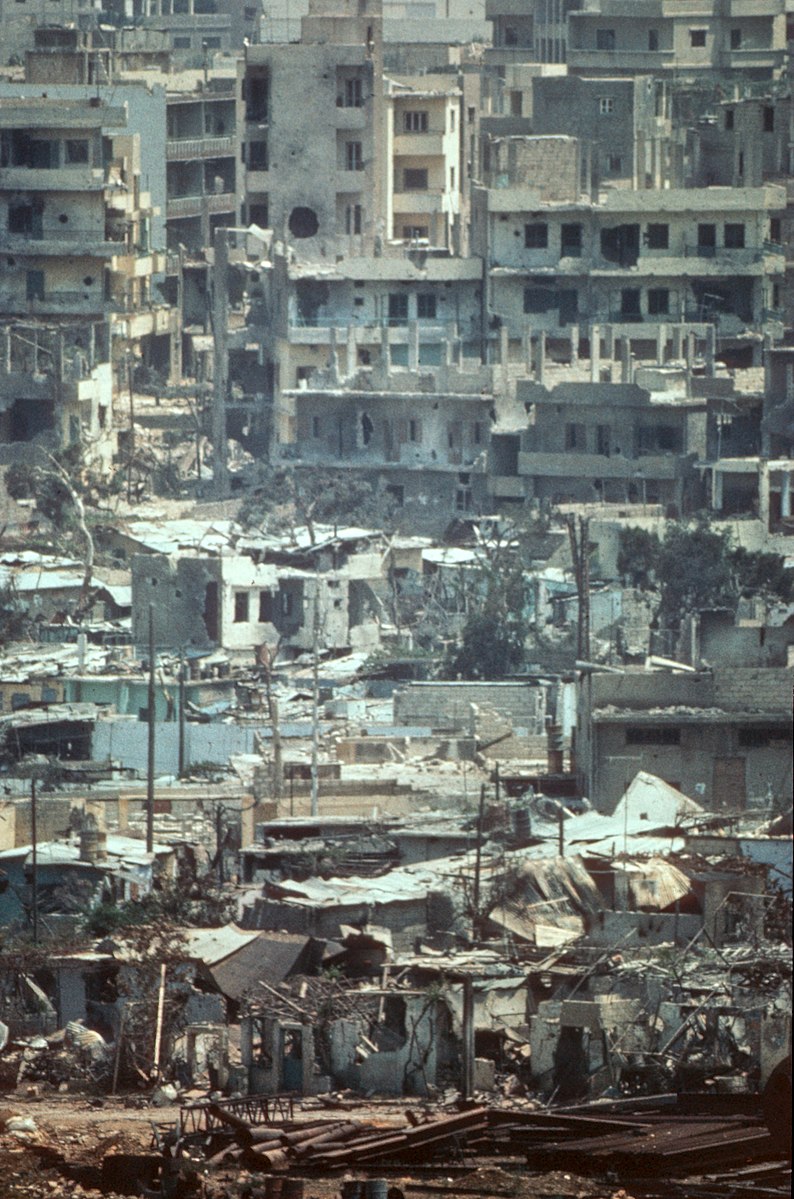
A photo of the destroyed Tel al-Zaatar refugee camp in east Beirut, taken in 1976. Beginning in January 1976, the camp was the site of intense fighting between Lebanese Christian militias and armed groups affiliated with the Palestinian Liberation Organization who were using the camp as a base for their paramilitary activities. | Photo Credit Siege of Tel al-Zaatar. (2023, July 31). In Wikipedia. (link)
“School during the day… and going to fight at night”
Raymond Nader: We were beginners — we didn’t know how to fight. We learned quickly how to use these machine guns, and then we went to fight the Palestinians, who were very well-trained, and had a lot of experience. That’s why we had a huge number of casualties, because we were not professionals. We were just students going to war against very well-trained and well-armed Palestinians. I remember that during one attack, more than 300 young people were killed on the first day. Because we didn’t know how to really maneuver during war. And that night, seven of my friends were killed during this attack, and I was the only one to survive.
So then I started growing up fast. I went back to school, and I realized that I had grown a lot more than my friends at school. I saw them as kids. I had really grown up very fast. War and death and responsibilities make you mature quickly. And since that moment, I was deeply involved in the Lebanese [civil] war. I fought on almost all of the fronts of the Christian area. There was a Christian stronghold in Lebanon, surrounded by the Syrians, and the Palestinians, and the Iranians, and the Iraqis and the Libyans — and the Senegalis. There were armies from all over the Arab [world], fighting this small stronghold of Christians in Lebanon.
Lebanon Report: What would have happened if they had defeated you? Would you have been killed? Or put in prison, or into exile?
Raymond Nader: Exactly the same thing that happened to the Christians in Iraq, and the Yazidis. The same would have happened to us. Some would have been pushed to the sea, to flee, some would have been killed.
Lebanon Report: Was this war organized from above? How could these various countries all contribute their men?
Raymond Nader: It was under the influence of Yasser Arafat, who was, at that time, the head of the Palestinian resistance. So all the Arab countries were supporting Arafat with men, and weapons, and money.
Lebanon Report: But why did they turn against the Maronites of Lebanon, instead of the Jews of Israel?
Raymond Nader: Because there was a plan — the Kissinger plan was to replace Palestine with Lebanon. It was called the “alternate country”, because the Palestinians were looking for a country for themselves. They said, “instead of Palestine, we will give them Lebanon.”
Lebanon Report: And how close were they to succeeding?
Raymond Nader: Very close. Extremely close. In 1977 and 1978. I was, like all the young people of the Christian area, going to school during the day and going to fight at night — sometimes fighting during the day and studying at night. We were managing to study and fight at the same time.
Lebanon Report: What was the total number of your soldiers?
Raymond Nader: Not more than 3,000 fighting soldiers, approximately.
Lebanon Report: And for just 3,000, they were not able to take the country?
Raymond Nader: No. That was the surprise. When American Special Envoy Dean Brown went to Lebanon, he met with the Christian leaders there, and he was trying to convince them to leave the country. He said it was a hopeless case. “The only thing you can do is to flee the country, and we will take you on our own expense.” So the leaders then, Camille Chamoun and Pierre Gemayel, they refused. And they had a call on all of the radio stations, calling the young people to take weapons, and defend our country.
Lebanon Report: What was the voice of the Church at that time?
Raymond Nader: They were supporting the Christian resistance. Antonios Khoraish was the patriarch for two years, and after that Patriarch (Narallah Boutros) Sfeir (link) came. But at that moment, the [main] supporters of the resistance were the Lebanese Order of Monks. During the first two years, the Lebanese Order of Monks were selling many of their goods, their possessions, to get weapons and ammunition for the resistance. So at first, the first years, it was something like an autonomous defense [effort]. But it was so tiny, and so weak, in front of the Palestinians, supported by all the Arab countries. Yasser Arafat was receiving weapons and ammunition [by the] tons, while we were receiving a few bullets and a few old guns.
During the war, 17,000 fighters lost their lives. More than 144,000 civilians lost their lives, and 75,000 Christians.
During our Friends of Lebanon pilgrimage to Lebanon this September, we will be able to listen to the ancient hymns of the Maronite Church, sung in Syriac. Please consider joining us as we go in search of the ancient traditions that will help bring unity in a time of crisis. More information on the Friends of Lebanon pilgrimage can be found below.
St. Charbel [image taken from the website of the Family of St. Sharbel]
The Mystery of St. Charbel
Lebanon Report: So you were studying, you were at university?
Raymond Nader: Yes, I finished my school and then I went to the School of Engineering at the Jesuit University of Beirut. I graduated in electro-mechanical engineering. And then I received a scholarship to go to London and specialize in nuclear engineering. So I went to London, I specialized in nuclear engineering, I came back to Lebanon, and I studied in the nuclear field just by, by Providence. I didn’t want to be a nuclear engineer, because Lebanon is not a nuclear country.
So I just wanted to know more about the configuration of the universe, how the universe is working. To know more about the atoms. About the ingredients of the universe, how it is working. Just to know more about God. Because I was always asking questions, about creation, about God, about the purpose of life. “Why did God create us? What is the final destination? What is the purpose of life?”
I was always thinking about these things, apart from the Eucharist and the Mass and all these things. So the idea of God was the main axis in my life. Everything was revolving around it. Especially when I saw people dying.
I was always asking, “Why is there death? Why did God create people, if in the end they will die? Why are we investing in this world, since in the end, we lose all the investments?” Whatever you do in this world, you will leave it one day, and you will go. And I was always asking the same question — “If I die today, where will I be tomorrow? Is there something? Or is there nothing?”
So I was reading the Bible a lot, praying a lot, thinking a lot. Studying a lot. I went so deep into science. And then the mystery of St. Charbel… attracted me.
So I started going up to Annaya to pray, to meditate, to think, to find answers to these eternal questions of youth.
The first enigma was the body of St. Charbel. St. Charbel died in 1898. The first day, when they buried him in the grave, some mysterious light started going out of his grave. It was seen all around the area there, in all the country of Jbeil. He died on Christmas Eve, so the light started going out of his grave on Christmas Eve, and then the second day, and afterwards weeks, and months. And after five months, in May, they decided to open the tomb, to see what was the source of this light. There was no electricity, no fire, nothing. Just a strange light coming out of this …
Lebanon Report: Nuclear!
Raymond Nader: Nuclear, exactly. [Laughs.] So they opened the tomb. They took out the body of St. Charbel. It was like [he was] sleeping. Exactly like [he was] a sleeping man. So they changed his clothes, because the clothes were rotten, they put another set of clothes on him, and they put him in a box, in a casket. They realized, the second day, that he was sweating. They found some sweat on his forehead, on his face, on his hands.
Lebanon Report: And the body was not corrupt?
Raymond Nader: No, it was exactly like sleeping. It was moving [sic], flexible, and sweating. It was sweating a kind of liquid which was pinkish. It was a mixture of blood and water.
Lebanon Report: Like in the Garden of Gethsemane…
Raymond Nader: Yes, exactly. So they were cleaning the body, changing the clothes, every day. And he was always sweating. A big quantity of this liquid, this mysterious liquid, coming out of his body. So the monks there, they tried to treat the body of St. Charbel. So they put it in the sun, sometimes they would wash him.
Lebanon Report: Oh, my goodness. It became an experiment.
Raymond Nader: Exactly. Because they [didn’t] want to wash him every day, to wash his clothes. It was a burden for them. So they tried to treat it, to stop this sweating. And they didn’t succeed. He kept sweating. And then they received an order to [once again] put the body in the grave, and stop playing with it. And in 1950, another wave of light started coming out of the tomb of St. Charbel.
They took him out again, after 52 years. [His body] was still uncorrupted and sweating as well. They found his casket full of liquid. So they took him out of this liquid. And thousands of miracles started happening at the tomb of St. Charbel. In one year, thousands of people visited Annaya and were healed. Some blind people were seeing, some lame people were walking. And thousands of miracles happened. So they put him in a new casket, and they changed his clothes, and he kept sweating.
So after that, in 1965, he was beatified, and declared Blessed.
And then his body stopped sweating. And it was just [as if he were] sleeping.
And after that, the flesh of his body disappeared, and the only thing that remained was the skeleton and the skin. And it is in the same state now. So this mystery of the body of St. Charbel was an enigma for me, as a scientist.
So I started thinking scientifically about the body of St. Charbel. He was sweating for 67 years. So, making a small calculation, a huge quantity of liquid went out of the dead body. It’s against all scientific laws. You know, the first rule in science is that nothing is created, nothing is destroyed. Everything is transformed. So here there is…creation. A body of 80 kgs. gave 30,000 liters of liquid over 67 years, 2 liters per day. It was amazing. They were just washing the body, emptying the casket, giving it new clothes. And they kept doing this for years.
So as an engineer, as a nuclear engineer, I was thinking scientifically about this body. “How can this happen?”
So I started going up to Annaya to pray, and I felt deep down inside of me that St. Charbel is still alive. So, there is something that will happen after our death.
When I started going up to Annaya, I was 24. And I kept going up to Annaya for 10 years. I would go up to the hermitage, pray there, spend the night praying, meditating, thinking, trying to find the answers to these questions.
Two pilgrims on our September, 2022 Friends of Lebanon pilgrimage to Lebanon stand by the door to the cell where St. Charbel spent the last 23 years of his life. Charbel slept on the floor; visible through the glass is the log that he used as a pillow
“The flames of the candles were not moving”
Lebanon Report: And the civil war was still not finished?
Raymond Nader: No. I was going up during the war. During that time I was the Commander of the School of Officers of the Lebanese Forces. It was very close to Harissa, five kilometers [away]. I would finish there, come home to my family, take care of my family, my kids. And at night, at 10, 11, 12, it depends, I would take my car and I would go up to Annaya, spend the night, and then come back in the morning.
Lebanon Report: Did you ever sleep?
Raymond Nader: Yes, either a few hours before I went, or a few hours after I came back. I would go at least three nights per week.
Lebanon Report: You said you had a sense that [St. Charbel] was still alive. What was this sense?
Raymond Nader: You know, it’s not from my own experience, but when you are in Lebanon, you can hear the stories of St. Charbel everywhere. Every day, we hear stories that…he appeared to someone, he healed someone, someone went up to Annaya blind and came back with sight, someone was lame and he came back walking. A lot of miracles are happening, around the clock.
So I was hearing about St. Charbel everywhere. And in Lebanon, all of the Lebanese feel that St. Charbel is still alive. He is moving. A lot of healings are happening every day. So that’s why, when I used to go to Annaya to pray during the night, I was asking St. Charbel to give me a hint about what is going on on the other side of life.
So I would pray, read the Bible, meditate on the Bible, try to talk to Jesus, to find some clues about the “other life.”
And then, when I finished, I would close the door of the hermitage and go back to my car. While I was going, I always stopped and looked at the hermitage, talking to St. Charbel. I was telling him, “You know the truth. Please let me touch it. I want to know what’s going on on the other side of life.” And I would go back home.
So I was doing this for around 10 years, from 1985 to 1994.
And then, one night, it was November 10, 1994, my 33rd birthday.
That night, I went to Annaya, like every night. I usually would take with me the Bible, a few candles, to be able to read the Bible, because there is no electricity. I arrived to the hermitage at around 10, 10:30. I knelt down. I lit the candles and started reading the Bible. It was November 10; it’s extremely cold in Annaya, you cannot stand [outside] for more than a few minutes. So I started praying, like every day. And then, while I was praying, I felt a warm breeze, surrounding me. I felt warm; I was so happy to feel warm. But I was intrigued. “I am feeling warm in Annaya during the wintertime, in the hermitage. It is impossible.”
So I started thinking about this warmth I [was] feeling. And then, while I was thinking, this breeze was starting to be transformed into a strong, powerful, hot wind. So, in a few minutes, there was a hot wind blowing all around the place, shaking the trees, blowing the sand. And I was looking at the candles. I saw that the flames of the candles were not moving. They were standing still. There was a very strong, hot, powerful wind blowing and moving everything, except those flames of five candles. They were not moving at all.
So as a man of science, I decided to touch the flames, to make sure I am not hallucinating. I decided to stretch out my hand and touch the flames.
But before I moved, I was… transported to another world.
I lost all of my senses. I stopped hearing anything, feeling anything. I stopped hearing and feeling my body. I didn’t know at that moment if I was standing up or kneeling down. Then I found myself diving towards a huge light. It was like diving into the sun. I didn’t know where I was. I lost the notion of space. I started to not feel that I was inside my body.
So then when I went into this indescribable light — because I would never be able to describe it, because it’s something so strange, it’s a very powerful light. I can say frankly that it is billions of times more powerful than the sun. If you put the sun in this light, it would look like a candle. It’s so powerful, so bright. But it’s not the light that we know. So it’s not hot, it’s not burning. It doesn’t hurt the eyes. You could look at it for hundreds of years. It’s so smooth, so transparent. It looks like a crystal, like pure water. But it’s light, it’s not water. So powerful and so smooth at the same time. So bright and so clear at the same time.
And I felt a presence.
I felt that, “Someone’s here.”
I couldn’t see him. So I said to myself, “Maybe I am dreaming.” So this being, that I was not seeing, he said to me, “No you are not dreaming.” And he was talking without talking.
So he spoke to me without speaking, without any language, without a voice, without words. But it was extremely clear; he said, “No, you’re not dreaming,” without speaking. It’s hard to describe it but he was not speaking in Arabic, nor English, nor Spanish, nor French…
So when he talked to me this way, I said, “Maybe I’m not conscious.” Then he said to me in the same way, “Now you are conscious. You have never been as conscious in your life as you are now.”
So I started asking thousands of questions, in my head. First I said, “Ok, who are you, speaking to me?”
When I asked him who he was, he revealed himself to me in a special way. He didn’t show me his face, and he didn’t tell me his name. But when I asked him, “Who are you?” I felt something strange invading me. And then I started feeling something which is the most beautiful thing that a human being can feel. It was a tremendous feeling of peace, joy, freedom, and a huge — I don’t know how to describe it — it was a huge amount of love, tenderness, and affection. And then he said to me, “This is me.” This was how he claimed himself to be.
So he said, “This is me,” and at that moment I was so happy that I didn’t want to know anything — neither about this life, nor about the other life. All I wanted then was to stay as we were. So I said — I was speaking to myself — “I want to ask him to stay, and if he wants to go, to take me with him.” Then he said to me, “I am always everywhere.”
And then the light went off, and I found myself in the same place [as before]. What had changed was the candles. I looked at the candles and they were totally consumed.
I looked at my watch and it was 3:35 in the morning.
Four hours and a half passed like a second.
It was like I was out of space, out of time.
But even when I came back, I kept feeling the same feeling inside my heart. My heart was blowing [sic]. Full of peace, and joy, and love, and something that I cannot comprehend or describe.
Raymond Nader showing the mark he received on his arm on the morning of November 11, 1994 [image taken from the website of the Family of St. Sharbel]
Receiving the mark
Raymond Nader: So I went back home. While I was walking back to my car, I felt something on my arm. It was a slight pressure and a little bit of warmth. I didn’t think about my arm; I was thinking about the light, the candles, about this beautiful being that I was communicating with. And then, I started feeling that my sleeve was stuck to my skin.
So when I reached my car, and turned on the lights, I looked at my arm and I found five fingers printed on my arm, and blood and water coming out of the fingers. They were engraved in my flesh. So I started touching the fingers to see what was going on. I didn’t feel any pain. If you looked at it, and you saw it bleeding, you would say I should be screaming from [the] pain. But I didn’t feel anything. So I thought, again, that I might be hallucinating. So I went back home. The first person to see me was my wife, of course. And when she saw the fingers bleeding, she made the sign of the cross, and she asked me, “Whose fingers are these?”
So I was relieved, because I realized then that I was not hallucinating; my wife saw the same thing. And that night, I changed everything in my life. I decided to dedicate my life to Jesus Christ, to this light, to St. Charbel. So the second day, I left everything; I left my work, my activities — political, social, everything. I kept only my family — my wife and my kids. And I started a new life. We went with the founders of Télé Lumière, this Christian TV station. So I started this with them, we founded this TV [station], and I was dreaming of having a huge station, preaching and proclaiming Jesus Christ to the whole world — especially the Arab world. So we started a very tiny, small, TV station in Beirut, covering a few quarters of Beirut. And then we started growing.
So I had a dream of having this big TV [station], covering the whole world, and this dream came true. A few years ago we had nine channels broadcasting on six satellites, covering the whole world; different programs. Now we are passing through this economic crisis. We had 180 employees, now we are 30. We took down four of our channels, and we are broadcasting now on five channels, three satellites. And we are broadcasting in Arabic on these channels. And two years ago, we started an English channel. And I am still directing this TV station.
Lebanon is a very small country. This happened to me on November 10, and on November 11, all of the Lebanese were aware of what had happened in Annaya. It spread like lightning in Lebanon.
There was a rush of TV, and magazines, and radio, coming to interview me. So for a few days, I was becoming crazy [with] the media. It was like a wave of conversion for a lot of people. Especially the people who were fighting [alongside] me, the fighters of the Lebanese Forces, a lot of the army, a lot of people coming from all around Lebanon. We gathered every Friday night in Annaya. We had Bible study and then Mass, and then a procession from the monastery to the hermitage, praying the rosary. Thousands of people, every Friday, coming to Annaya to pray together. We reached 15,000 sometimes in the summer, during July and August. Between 10,000 and 15,000 people, gathered in Annaya to pray, have the Holy Mass, and then the procession to the hermitage.
And then we started the Family of St. Charbel. It’s a prayer group, which has now become like an organization. Now we are in 10 or 12 countries, where we have the Family of St. Charbel. People praying, converting, preaching. And so I kept going with this new mission, and then I went through the same experience several times a year: every time I see the same light, and some blood and water come out from the fingers [the mark on his arm] for a few days. Now it has happened 55 times, I think. And every time I receive a kind of message, I take notes, I give it to the Patriarch. Because these are the rules. And now, what I am doing is directing this prayer group called the Family of St. Charbel, the TV station, called Télé Lumière, and we founded this movement called the Liban Message movement, for reconciliation and spreading peace in Lebanon.
[End, Lebanon Report interview with Raymond Nader]
News
Syriac Catholic Patriarch Visits United States
The Syriac Catholic Patriarch of Antioch, Ignatius Ephrem Joseph III Younan, visited the United States and Canada in late July.
During his visit to the Syriac Catholic parish of Our Lady of Deliverance in New Jersey, I had the incredible honor and good fortune of meeting with the Patriarch, discussing with him the current challenges of Christian communities in Lebanon, Syria, and Iraq, and presenting to him the work of our Unitas initiative and our Friends of Lebanon project.
Our Lady of Deliverance, located in Woodland Park, New Jersey, was the first parish established by Patriarch Younan in 1986, when he was sent as a young priest to the United States to minister to the increasing numbers of Syriac Catholics living in the country.
Patriarch Ignatius Ephrem Joseph III Younan, the Syriac Catholic Patriarch of Antioch | Photo Credit: (link)
On Sunday, July 23, the Patriarch returned once again to Woodland Park to celebrate Mass alongside Bishop Yousif Behnam Habash, the current Eparch of our Lady of Deliverance — an eparchy which encompasses all of the Syriac Catholic parishes within the United States. Patriarch Younan and Bishop Habash celebrated Mass in the presence of several other priests and bishops — including Bishop Gabriele Giordano Caccia, the Permanent Observer of the Holy See to the United Nations and the former Apostolic Nuncio in Lebanon — and the congregation.
At the conclusion of the Mass, the Patriarch spoke warmly of his memories of arriving in the United States 37 years ago, and Bishop Habash spoke about his lifelong friendship with and respect for the Patriarch, who “had called me to serve the Church as young priest, who spoke no English.”
The following morning, I had the opportunity to meet the Patriarch personally and discuss the work of Unitas and the Friends of Lebanon with him. The Patriarch told us to continue our work and invited us to visit him at his seat in the suburbs of Beirut during our upcoming pilgrimage to Lebanon from September 17-25.
There are still several spots open on this pilgrimage; please contact us if you would like to come and experience this once-in-a-lifetime journey to the “Land of Cedars” with us.
Click below to learn more.
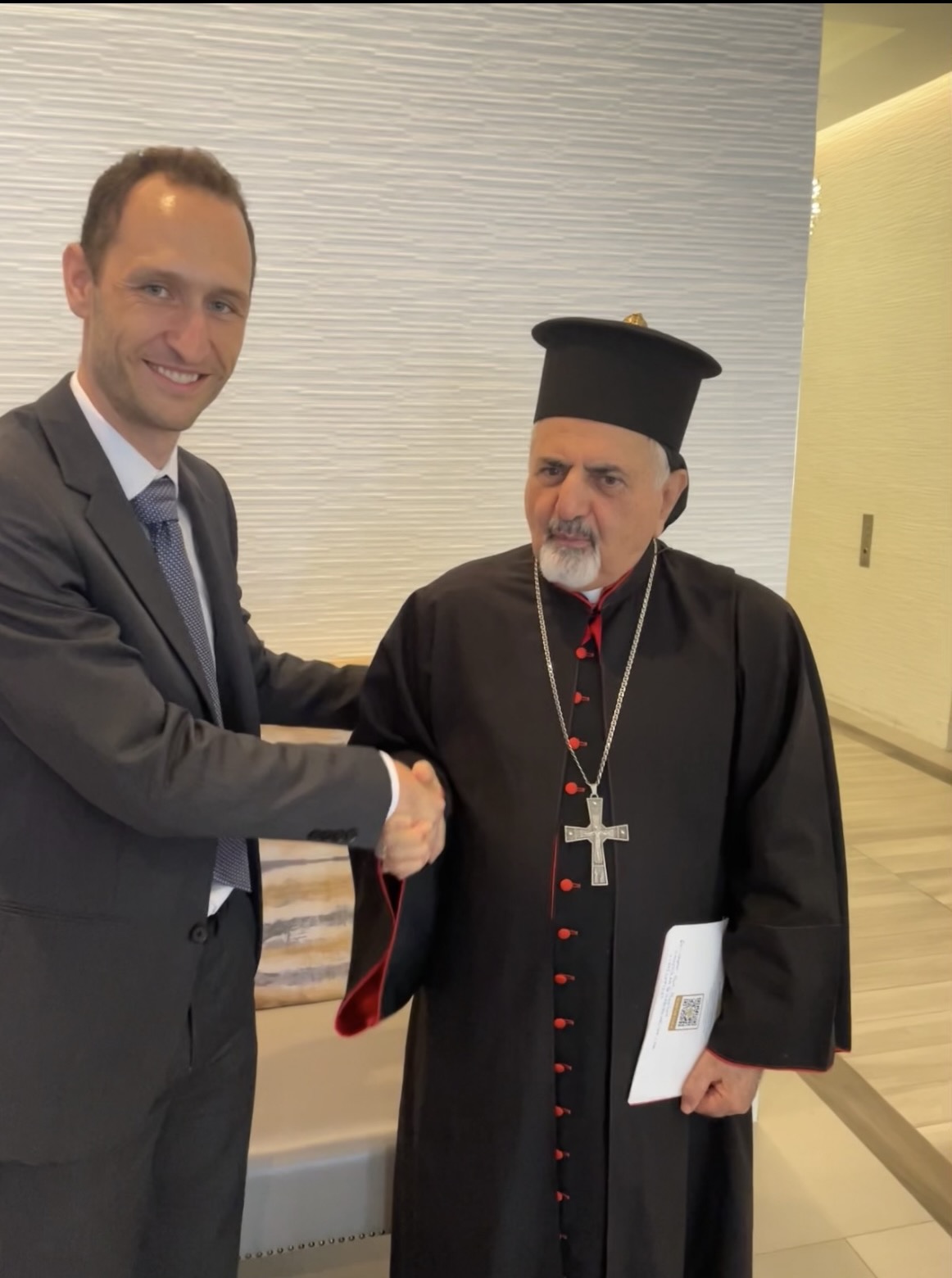
Patriarch Ignatius Ephrem Joseph III Younan, with Christopher Hart-Moynihan, Director of Unitas: Friends of Lebanon and the author of these reports
Patriarch Younan told me that his summer patriarchal seat, at Sharfeh Monastery in the mountains 25 kilometers to the northeast of Beirut, is now home to the Order of Ephremite Monks. This order, founded in 1705, was nearly completely wiped out during the Sayfo, the mass killing of Christians during the breakup of the Ottoman Empire at the end of World War I.
“The monks returned and began living once again at Sharfeh in the year 2000,” the Patriarch told me. “Just a handful of monks, and it is very cold in the winter. But this small community slowly grew, and it is a living monastery once again. It is a very beautiful monastery, on the road from Beirut to Damascus. Many important manuscripts in the Syriac language are kept there.”
At the conclusion of our meeting, I presented the Patriarch and Bishop Habash with a printed booklet containing articles that I have written over the past two years as part of these Lebanon Reports. We discussed, for a moment, the current political situation in Lebanon, and for Christians throughout the Middle East. The Patriarch told me that people in Western countries, such as France, Canada and the United States, need to become more engaged and informed about the ongoing removal of Christians in the Middle East.
“There has to be a return to Christ,” he told me. “For example, it is strange, when there was a film that claimed Jesus had relations with a woman [likely referring to the film The Last Temptation of Christ], only Muslims protested this. Christians in the West did not speak out.”
After his visit to New Jersey, the Patriarch continued on to Montreal, to visit another Syriac congregation, and then to Orlando, Florida for the 141st Supreme Convention of the Knights of Columbus, held from August 1-3.
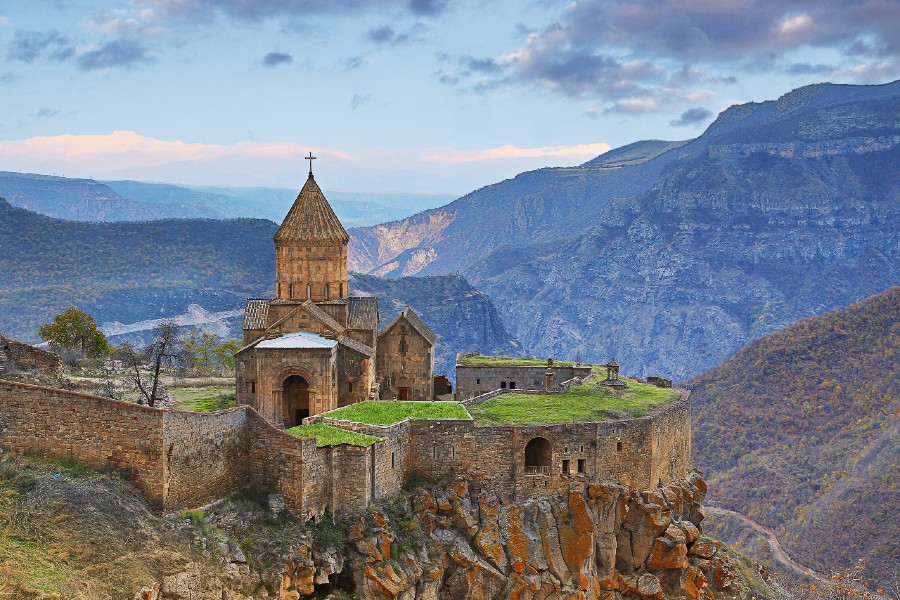
Tatev Monastery and Church in Armenia
Armenian Christian Community in Danger in the Caucasus
Although it does not concern Lebanon, an emerging story of the past several days and months deserves more attention on the part of readers of this report, the Christian community, and the world as a whole.
The ongoing conflict between the nations of Armenia and Azerbaijan has its origins going back centuries, to the first movements of pagan, and then increasingly Muslim, Turkic tribes into what had been a patchwork of small, but ancient, mostly Christian kingdoms on the eastern edge of the Byzantine Empire, roughly one millennium ago.
Although it is difficult to speak with authority on all of the events that have transpired since that time, what is now increasingly clear is that the conflict is ongoing, and in fact may be reaching a boiling point.
Several days ago, the Lebanon Report received an email from a concerned reader directing us to a recent interview given by Bishop Mikael Mouradian, the Armenian Catholic Eparch of our Lady of Nareg, covering the territory of the United States and Canada. Incidentally, Bishop Mouradian was born in Beirut — which is home to a large (Christian) Armenian community.
In the interview, Bishop Mouradian speaks of the re-igniting of the war between Armenia and Azerbaijan in 2020 over the territory of Nagorno-Karabakh, which, according to the bishop, is situated in Azerbaijan but populated by ethnic Armenians. Now, according to the bishop, Azerbaijani authorities are blockading the single road that connects Armenia and Nagorno-Karabakh, meaning that the communities in Nagorno-Karabakh no longer have access to the aid that was previously being brought by the International Red Cross and other groups.
We will be monitoring this story. The bishop’s full interview with The Pillar is available here.
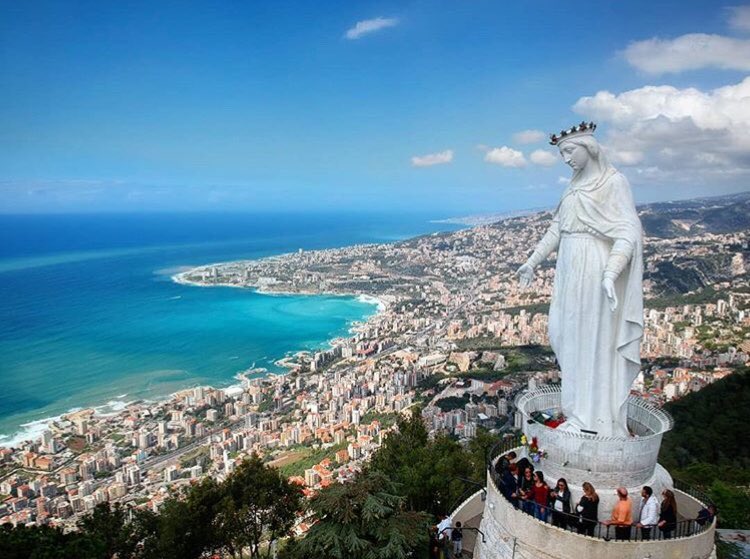
In the Footsteps of St. Charbel: Our September Pilgrimage to Lebanon
I would like to invite you to join us on our 2023 Inside the Vatican Pilgrimage to Lebanon. We still have a few spaces left!
Lebanon is a small, beautiful country of seacoasts (see the above photo of the coastline north of Beirut), hills, mountains and rivers, and majestic cedar trees that has a history stretching back thousands of years, to the Phoenicians and the invention of writing itself in the city of Byblos.
Tucked in between Syria and Israel, the country is a crossroads between Asia and Europe, between the Christian, Muslim and Jewish worlds. Christians have been here since the very beginning, and the Maronite Catholics are a treasure in the global Catholic community.
Many have reflected on the unique situation and mission of the country as a special place of dialogue and living together which deserves to be supported and protected.
Our trip is not only a pilgrimage to holy places and shrines, but also a time for us to go within, toward one place only — toward the heart of God, to that place where we find our own personal unity with Him.
Our itinerary is a living itinerary. Each day could present unexpected encounters. Our prayer and hope is that we allow the Holy Spirit to be our guide.
Come with us to Lebanon to encounter this ancient land where Jesus walked and to meet modern-day saint!
Friends of Lebanon Scholarships
Here I continue with three more profiles of the young people that have been assisted by our Friends of Lebanon initiative over the past two years. We have assisted 132 students as they pursue their education, and plan to continue this work.
If you feel moved to help this next generation of Lebanese build their future in the “Land of Cedars,” you can make a donation here.
Georges
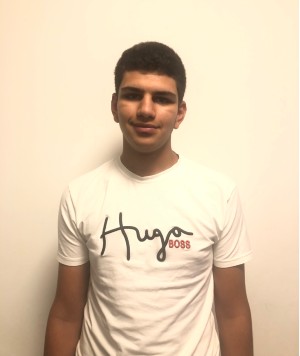 Georges is one of three siblings. He is 17 years old and he lives with his parents, who both lost their jobs after the onset of the economic crisis in Lebanon in 2019.
Georges is one of three siblings. He is 17 years old and he lives with his parents, who both lost their jobs after the onset of the economic crisis in Lebanon in 2019.
Georges’ mom was diagnosed with cancer and has to receive a very expensive form of therapy every six months.
Georges is a football (soccer) player, but he cannot afford to be part of a local team because of his family’s financial problems.
Joseph

Joseph is a 17-year-old student. He is known for his calm demeanor and his kind personality.
Joseph’s father is a long-time school bus driver, while his mother is unemployed. Joseph’s family is now struggling to survive and put food on the table with only his father’s salary, which has been affected by the ongoing economic crisis.
For this reason, Joseph is working several part-time jobs in order to be able to both study and help his family.
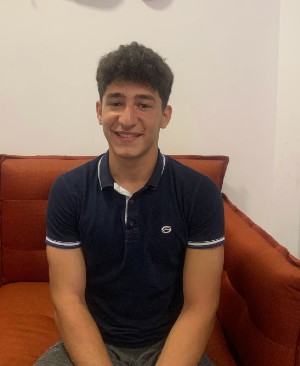 Youssef
Youssef
Youssef is 17 years old and a football (soccer) fanatic. He is so passionate about the sport that his dedication earned him a spot on one of Lebanon’s most renowned teams: “Racing Academy.”
Youssef’s father is a pharmacist technician and his mother works in cleaning services. He has one brother and one sister.
Please consider becoming a “Friend of Lebanon,” and help us to bring “short-term help” and “long-term hope” to the land where Jesus Christ walked and performed miracles.
As a “Friend of Lebanon,” you will be able to participate in our Zoom calls with the people we are working with in Rome, Beirut, and throughout Lebanon to support Christians in their ancient homeland.
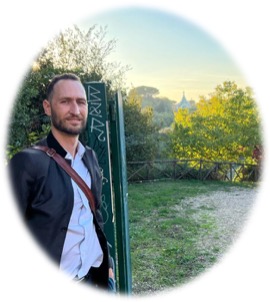 Please consider joining us.
Please consider joining us.
Christopher Hart-Moynihan
Director of Programs
Urbi et Orbi Communications
Enjoy a complimentary digital edition of Inside the Vatican Magazine by clicking here.
You can view all of our previous Lebanon Reports by clicking the button below. Please share with your friends and loved ones.




